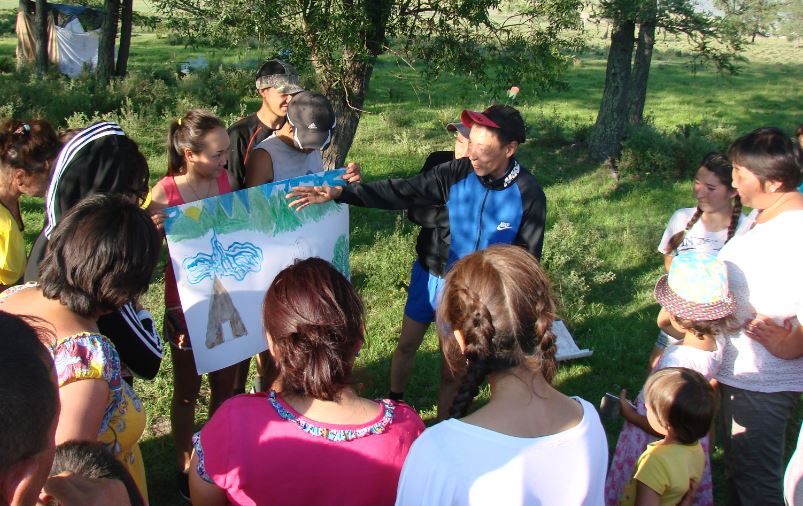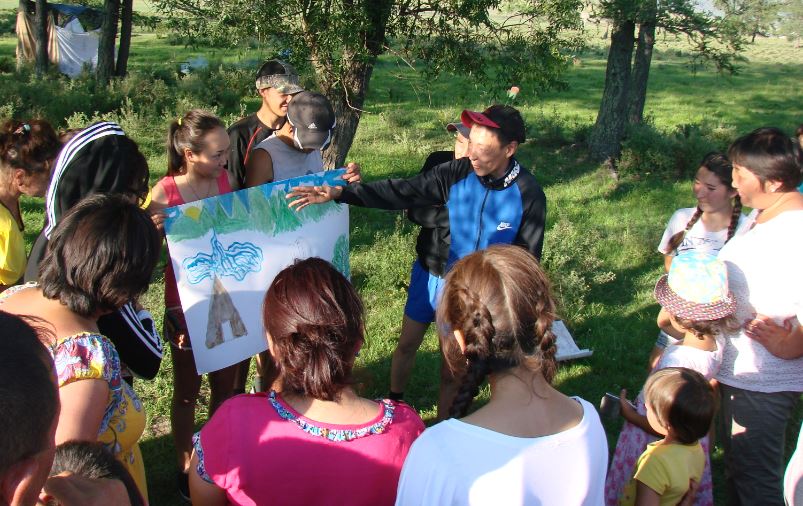
To sow the seeds of cultural awareness among the children is to prepare them to stand firmly on their tradition and indigenous identity. This is what the Partnership for Culture-creating Schools of Altai in Russia embarked on with their Education Through Action project which focused on the sacred Karakol Valley. Through a film showing (“Standing on Sacred Ground”) in five Altaian villages; a contest on Traditional Knowledge projects (drawings, photography, carvings, etc.); and a summer camp program, interest was stirred and awareness was shaped about traditional cultural values.
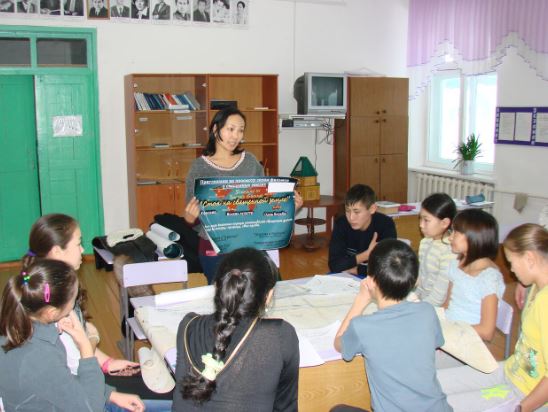
Within the school year, the competitive activities yielded a group of 44 children who were chosen for a summer camp program called “Protectors of the Karakol Valley.” The annual program adapts traditional methods of education where the participating children acquired various skills and invaluable knowledge about Altaian philosophy and various aspects of their culture such as playing traditional games, preparing traditional Altaian foods, and playing traditional instruments. It was their familiarization with the significance and history of their Sacred Valley.

To guide them in their learning highway was a toponymic map of the Sacred valley which was to guide their management and protection program to limit development of important locations which they had identified. They aimed to gather information on the origin of names of significant and sacred places in the Karakol Valley as a way of preserving traditional knowledge and for the children to have a sense of belonging and ownership of these local places and their names. Prior to the immersion, the children were oriented on map reading. This was followed by the organized visits to Karakol Valley schools in the villages where the children held conversations and exchanges with the elders to learn, gather and document the exact traditional names of places to be recorded on a map. Legends, stories or events about the valley were also gathered.
As a result of this exchange and mapping, more than 20 informational signages were installed and the Turgak Historical and Cultural Area was established at the entrance of the valley. Likewise, improvements to the sacred spring at the site and the parking area were accomplished.
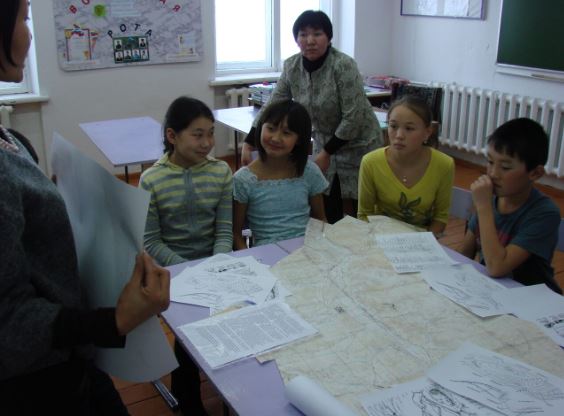
To guide them in their learning highway was a toponymic map of the Sacred valley which was to guide their management and protection program to limit development of important locations which they had identified. They aimed to gather information on the origin of names of significant and sacred places in the Karakol Valley as a way of preserving traditional knowledge and for the children to have a sense of belonging and ownership of these local places and their names. Prior to the immersion, the children were oriented on map reading. This was followed by the organized visits to Karakol Valley schools in the villages where the children held conversations and exchanges with the elders to learn, gather and document the exact traditional names of places to be recorded on a map. Legends, stories or events about the valley were also gathered.
As a result of this exchange and mapping, more than 20 informational signages were installed and the Turgak Historical and Cultural Area was established at the entrance of the valley. Likewise, improvements to the sacred spring at the site and the parking area were accomplished.
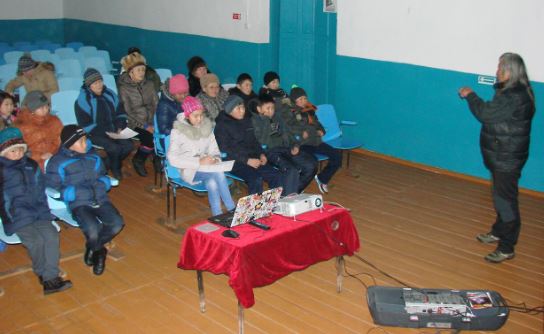
The results of the project were published in booklet and brochure formats and also posted on Uch Enmek Ethnocultural Nature Park’s website. The publication described the valley’s historical and cultural monuments and sites. There are plans to also publish and popularize the collected stories and legends about the valley.
A teaching methodology was innovated and tested about Traditional Knowledge in the modern context. This established and enriched the relationship and inter-connectedness of the local community and schools with their protected area. The project implementers achieved a level of strategic working relations with the schoolchildren in the identification of Traditional Knowledge drawn from the local natural landscape that has international significance.
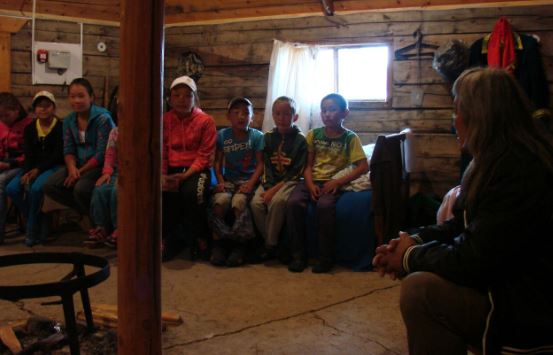
The showing of a film that helped the local communities identify parallel realities with other indigenous communities aided in their understanding of their particular culture and how diverse cultures thrive in contemporary times.
The challenges did not dampen the spirit and energy of the project team. Though initially there were difficulties in mobilizing the local community, and problems in convincing the indigenous population to appreciate the traditional norms for specific activities and dissuade them from the “new” cultural tendencies that have confused them, the learning process was fruitfully carried out. They acknowledge the need to address this continuing concern by pursuing the setting up of institutions for upholding Traditional Knowledge. Already, the Arusvaty Ethnocultural Scientific Education Center is focued on bridging conceptual gaps of traditional and contemporary knowledge.
The project Education Through Action was implemented by the Partnership for Culture-creating Schools of Altai in 2016 with support from PAWANKA Fund.

